the task that I'm trying to accomplish is isolating certain objects in an image through finding contours in the mask of the image, then taking each contour (based on area) and isolating it , and then using this contour to crop the same region in the original image, in order to get the pixel values of the region, e.g.:
the code I wrote in order to get just one contour and then isolating it with the original pixel value:
import cv2
import matplotlib.pyplot as plt
import numpy as np
image = cv2.imread("./xxxx/xx.png")
mask = cv2.imread("./xxxx/xxx.png")
# making them the same size (function I wrote)
image, mask = resize_two_images(image,mask)
#grayscalling the mask (using cv2.cvtCOLOR)
mask = to_gray(mask)
# a function I wrote to display images using plt
display(image,"image: original image")
display(mask,"mask: mask of the image")
th, mask = cv2.threshold(mask, 0, 255, cv2.THRESH_BINARY | cv2.THRESH_OTSU)
contours, hierarchy = cv2.findContours(
mask, cv2.RETR_CCOMP, cv2.CHAIN_APPROX_NONE)
for i in range(len(contours)):
hier = hierarchy[0][i][3]
cnt = contours[i]
cntArea = cv2.contourArea(cnt)
if 1000 < cntArea < 2000:
break
#breaking because I'm just keeping the first contour that fills the condtion
# Creating two zero numpy array
img1 = np.zeros(image.shape, dtype=np.uint8)
img2 = img1.copy()
# drawing the contour which will basiclly give the edges of the object
cv2.drawContours(img1, [cnt], -1, (255,255,255), 2)
# drawing indise the the edges
cv2.fillPoly(img2, [cnt], (255,255,255))
# adding the filled poly with the drawn contour gives bigger object that
# contains the both the edges and the insides of the object
img1 = img1 + img2
display(img1,"img1: final")
res = np.bitwise_and(img1,image)
display(res,"res : the ROI with original pixel values")
#cropping the ROI (the object we want)
x,y,w,h = cv2.boundingRect(cnt)
# (de)increased values in order to get nonzero borders or lost pixels
res1 = res[y-1:y+h+1,x-1:x+w+1]
display(res1,"res1: cropped ROI")
The problem is that yes I found a way to do it for just one contour, but is there another way where I can do it more efficiently because per image there could be hundreds of contours.




